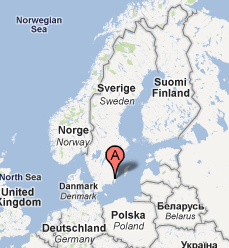Previously, tank level measurements were performed manually. This required operators to climb to the top of tanks in challenging winter conditions, putting them at risk of injury. The monthly checks took a whole day and involved the use of dipping ropes, calculating volumes, and updating a white board in the main control room.
Not only were personal safety issues involved, this manual process of measurement and calculations introduced the possibility of errors. And, since the measurements were not online in real-time, the operators did not have visibility to current tank levels or potentially abnormal situations such as tank overspill. More stringent environmental regulations prompted the need for improved overspill protection.
Adding wired level instrumentation was a problem, since:
…New cabling would require extensive groundwork which would disrupt operations and fuel tanker traffic around the site.
Working with the Emerson team in Sweden, the storage terminal team [hyperlinks added]:
…installed a plant-wide Smart Wireless network, DeltaV™ digital automation system, and AMS Suite predictive maintenance software to automate tank storage level monitoring. This enables FH Tank Storage to meet the latest environmental and safety requirements, as well as improve the efficiency, accuracy and reliability of level monitoring and the safety of terminal personnel.
The IEC 62591 wireless overspill protection solution, approved by Länsstyrelsen, the Swedish local environment and safety authority, was comprised of [hyperlinks added]:
Rosemount devices [Rosemount 3051S wireless DP pressure transmitters on smaller tanks, Rosemount 5402 non contacting radar level transmitters on larger tanks] deployed on 29 tanks transmit level and temperature data back to the latest versions of the DeltaV system and AMS Suite software installed in the main control room. A large screen provides operators with visualisation of all the tanks, tank levels and any high level alarms or instrumentation failures.
In the article, the FH Tank storage team reported these results:
There have been no overfill alarms at the site so far, and the historical information provided by the radar measurements has enabled quick and accurate answers to customer queries.
Based on these results the facility is expanding the number of tanks with wireless level measurement and overspill protection.

